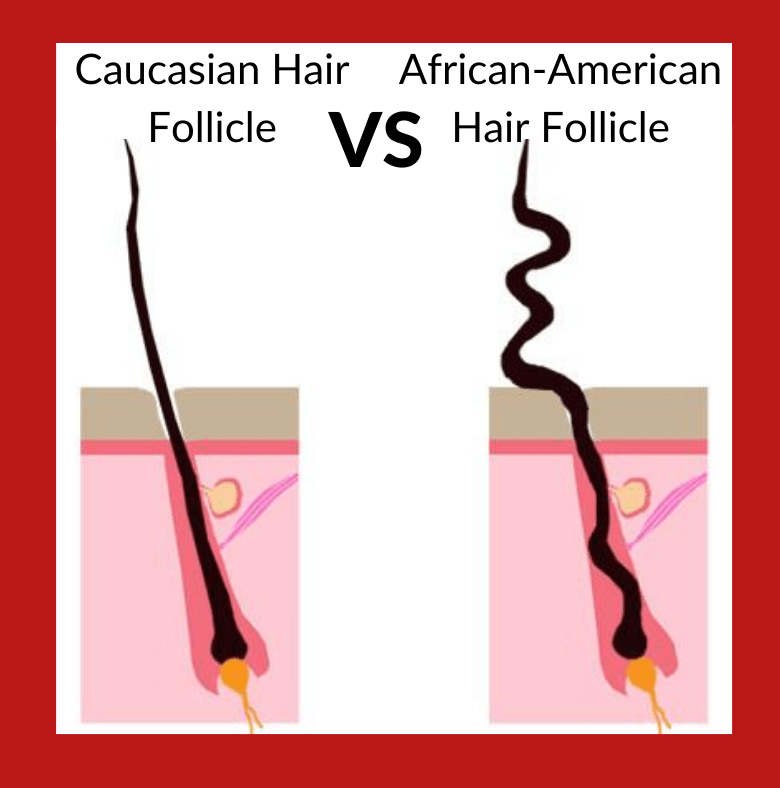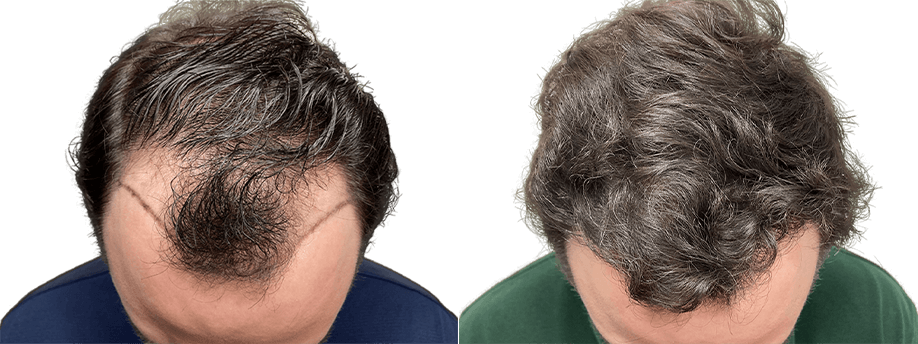Do Hair Transplants Work For African-American Hair?

Hair transplants do work for African-American patients, and there are surgical and non-surgical options available for patients regardless of their ethnicity. This is because hair transplant procedures like FUE and FUT utilize the patient’s own, naturally growing hair as the donor tissue for the areas in which hair has thinned or loss has occurred.
Every patient poses unique challenges with regard to their hair loss, and the unique characteristics of each individual hair transplant patient’s hair follicles does play a role in determining how much coverage is possible through the procedures that are available. For African-American patients, the typically curly hair follicles present challenges for the doctor but also offer benefits not available to patients of other ethnic backgrounds.
The typically curly hair follicles of an African-American hair transplant patient make it possible for the hair transplant surgeon to cover a larger area without requiring more follicular unit grafts to be utilized. It is also easier to craft a natural-looking hairline since a straight or slightly curved hairline is in keeping with the preferred hairstyle of most African-American patients. These are substantial benefits for African-American patients undergoing surgical procedures like FUE or FUT.
Although African-American patients enjoy the aforementioned benefits when undergoing a surgical hair transplant procedure, it is important to note that there are also some challenges that these patients will face. The same qualities that provide greater coverage for the patient — thicker, curlier hair follicles — also make it more difficult for the doctor to remove each follicular graft without damaging the follicle. Hair transplant surgeons at MAXIM Hair Restoration centers in Manhattan, Washington D.C., Houston, Dallas, Philippines; Dubai, generally recommend the strip method (FUT) for African-American hair transplant patients. The hair transplant surgeons have to exercise much greater caution when excising the follicular units from the donor site, as there is an increased risk of damage to the root of the follicle that could lead to graft failure.
African-American hair transplant patients should therefore seek an experienced and skilled hair transplant surgeon with previous experience working with other patients with similar hair follicle characteristics. Even though there are additional challenges created by the thicker and curlier hair follicles, a skilled surgeon is more than capable of excising hair follicles in a way that ensures viability for transplantation into the recipient site.
Patients should ask for examples of hair transplants completed for previous African-American patients, as previous and successfully completed hair transplants will demonstrate that the doctor is familiar with the unique challenges posed by the typical characteristics associated with African-American hair.
Which procedure is best for African-Americans: FUT or FUE?
In most cases, the unique characteristics of the patient’s hair loss will determine the most ideal hair transplant procedure. Surgical options like FUT or FUE are usually considered in terms of the total amount of coverage required and the patient’s individual preferences regarding the recovery period associated with each. This is true for most African-American hair transplant patients as well, but the challenges associated with the removal of the donor tissue may dictate which procedure is most ideal.
Since African-American hair transplant patients tend to have thicker and curlier hair follicles, some doctors will recommend the FUT procedure in order to make it easier to secure the largest number of follicles without damaging the root of the follicle. This ensures that the follicular unit grafts are more likely to be viable for transplant once they are inserted into the incisions made in the recipient site. Other hair transplant doctors might argue that since the FUE procedure allows for the individual removal of follicular unit grafts, it is easier to account for the curvature of the root and ensure the viability of the graft for transplant.
Also at issue is the type of hairstyle usually preferred by African-American hair transplant patients. Most African-American males prefer a short, close-cropped hairstyle that would make it difficult to obscure the scar left behind by the FUT procedure. Since the FUE procedure is known as a no linear incision, no-suture option, patients do not have to worry about a visible scar being left behind as a result of undergoing the hair transplant procedure. Also, the thick, curly hair follicles offer better coverage than other types of hair follicles, which makes the FUE procedure a more viable option despite the limited number of grafts that can be transplanted during a single session of FUE.
What are the challenges with African-American hair transplants?

Prospective hair transplant patients all bring unique challenges that a hair transplant surgeon must be able to overcome. African-American hair transplant patients pose a challenge for hair transplant doctors due to the typical characteristics associated with their hair follicles, which tend to be thicker and tightly curled. The curvature of this type of hair extends into the root of the hair follicle, which makes it more difficult for a hair transplant doctor to remove for the purpose of transplantation into the recipient site.
The curvature of the root must be accounted for during the excision of donor tissue, otherwise the doctor risks damaging the root of the follicle in a way that could reduce the viability of the transplanted graft once it is transplanted into the surgical incision created in the recipient site. While the curvature of the hair is a challenge associated with hair transplant process, experienced doctors at hair transplant clinics in New York City; Greenwich, Connecticut; Chicago, Illinois; Washington D.C. and Northern Virginia; Houston, Dallas, Texas; Manila, Philippines; Dubai, Abu Dhabi, U.A.E.; and Karachi, Pakistan, understand how to account for the unique characteristics of African-American hair follicles and can still create a natural-looking hairline and a thicker head of hair through the use of a surgical hair transplant procedure such as FUT or FUE.
African-American hair transplant patients are not limited to surgical options for hair restoration, as a number of non-surgical options could be effective in generating the permanent solution being sought by the patient. Patients who prefer to maintain a shorter hairstyle could be ideal candidates for scalp micropigmentation, a non-surgical procedure in which special pigments are inserted at a shallow depth just below the skin to replicate the appearance of naturally growing hair. This pigment can be inserted in a way that looks like stubble or short hair, which is ideal for patients who prefer a close-cropped hairstyle.
As is the case with every prospective hair transplant patient, it is best to consult with an experienced and highly skilled hair transplant surgeon before making any decision regarding a hair transplant or a specific hair transplant procedure. Each patient is unique and should be evaluated by a professional in order to determine the most ideal course of action based on their unique hair loss characteristics and their individual hair restoration goals. Most reputable hair transplant clinics offer free consultation, and these consultations can be performed in-person or, if it is more convenient for the patient, via a host of digital methods like email or videoconferencing.

